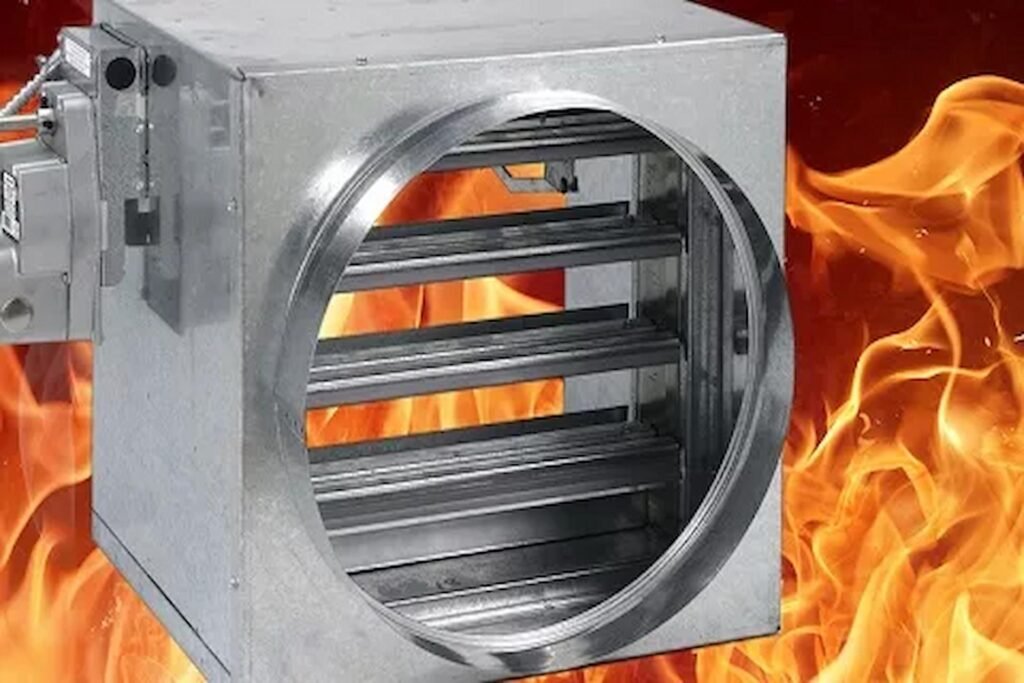Fire dampers are a crucial part of any building’s fire safety system that is designed to stop the spread of fire and smoke through ductwork, protecting both lives and property. However, like any safety mechanism, fire dampers can fail if not properly maintained or installed.
These failures often go unnoticed until an inspection or, worse, an actual fire, reveals a problem. That’s why regular fire damper testing is such an important part of any building’s safety and compliance regime, ensuring each damper will perform exactly as intended when needed.
By recognising the most common causes of failure and taking preventative action, building owners and facilities managers can maintain compliance and significantly reduce fire risks. Here, we look at the five most frequent fire damper failures and how to prevent them effectively.
-
- Poor Installation
One of the most frequent causes of fire damper failure is incorrect installation. Dampers must be fitted precisely within the ductwork, with access points for inspection and testing. Unfortunately, shortcuts during construction or refurbishment can lead to dampers being installed backwards, blocked by insulation, or inaccessible for future maintenance. The result is a device that cannot function when it’s needed most. Ensuring installation is carried out by qualified professionals who understand the relevant British Standards, such as BS 9999 and BS 9991, is essential. - Lack of Regular Testing and Maintenance
A fire damper that isn’t tested might as well not exist. UK regulations require that fire dampers be tested and inspected at regular intervals, usually at least every 12 months. Over time, dust, corrosion, or debris can prevent the damper from closing fully, compromising its ability to contain fire. Professional fire damper testing services use specialised equipment to check that each damper closes and reopens correctly, ensuring compliance and peace of mind. - Obstruction or Mechanical Damage
It’s not uncommon for dampers to become obstructed by foreign objects or damaged by maintenance activities. Items such as tools, insulation materials, or even cabling can prevent the blades from closing and in some cases, the release mechanism may become bent or jammed. Preventing this comes down to awareness, ensuring that anyone working near dampers understands their function and takes care not to interfere with them. - Corrosion and Dirt Build-up
In older buildings, dampers may suffer from corrosion or dirt accumulation, particularly in areas with high humidity or poor air filtration. Rust and debris can stop the damper from sealing properly, reducing its effectiveness in the event of a fire. Regular cleaning and lubrication, as part of a structured maintenance plan, can significantly extend the lifespan of fire dampers and keep them in working order. - Missing or Inaccessible Dampers
Surprisingly, some dampers are never installed where they should be, or they’re later concealed behind ceilings or walls, making them impossible to inspect or operate. This issue often arises during building alterations or refurbishments. A full fire damper survey can help to identify any missing, damaged, or hidden units, ensuring the system provides full coverage as intended.
- Poor Installation
Preventing Failures Through Professional Testing
The best way to prevent fire damper failures is through consistent, professional inspection and testing. Specialist fire damper testing services not only verify that each damper operates correctly but also provide detailed reports and recommendations for any necessary repairs or improvements. By entrusting this work to trained professionals, building owners and facilities managers can ensure full compliance, reduce liability, and, most importantly, maintain the safety of occupants.
Regular testing and proactive maintenance don’t just meet legal obligations; they save lives. A well-maintained fire damper system is a silent guardian, ready to act when it matters most.

